Abdelaziz Lakhfif
Design and Implementation of a Virtual 3D Educational Environment to improve Deaf Education
May 29, 2020



Abstract:Advances in NLP, knowledge representation and computer graphic technologies can provide us insights into the development of educational tool for Deaf people. Actual education materials and tools for deaf pupils present several problems, since textbooks are designed to support normal students in the classroom and most of them are not suitable for people with hearing disabilities. Virtual Reality (VR) technologies appear to be a good tool and a promising framework in the education of pupils with hearing disabilities. In this paper, we present a current research tasks surrounding the design and implementation of a virtual 3D educational environment based on X3D and H-Anim standards. The system generates and animates automatically Sign language sentence from a semantic representation that encode the whole meaning of the Arabic input text. Some aspects and issues in Sign language generation will be discussed, including the model of Sign representation that facilitate reuse and reduces the time of Sign generation, conversion of semantic components to sign features representation with regard to Sign language linguistics characteristics and how to generate realistic smooth gestural sequences using X3D content to performs transition between signs for natural-looking of animated avatar. Sign language sentences were evaluated by Algerian native Deaf people. The goal of the project is the development of a machine translation system from Arabic to Algerian Sign Language that can be used as educational tool for Deaf children in algerian primary schools.
A frame semantics based approach to comparative study of digitized corpus
May 29, 2020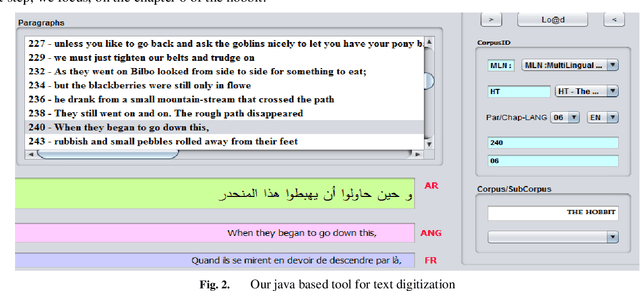

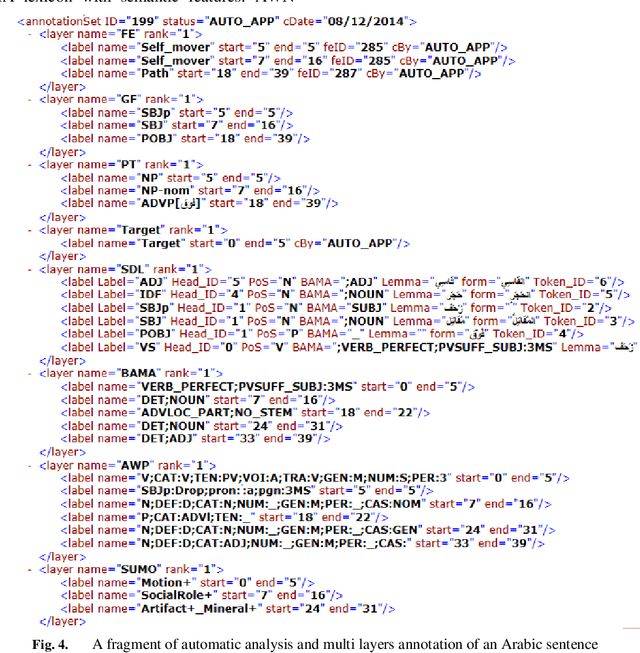

Abstract:in this paper, we present a corpus linguistics based approach applied to analyzing digitized classical multilingual novels and narrative texts, from a semantic point of view. Digitized novels such as "the hobbit (Tolkien J. R. R., 1937)" and "the hound of the Baskervilles (Doyle A. C. 1901-1902)", which were widely translated to dozens of languages, provide rich materials for analyzing languages differences from several perspectives and within a number of disciplines like linguistics, philosophy and cognitive science. Taking motion events conceptualization as a case study, this paper, focus on the morphologic, syntactic, and semantic annotation process of English-Arabic aligned corpus created from a digitized novels, in order to re-examine the linguistic encodings of motion events in English and Arabic in terms of Frame Semantics. The present study argues that differences in motion events conceptualization across languages can be described with frame structure and frame-to-frame relations.
Multi-Level Analysis and Annotation of Arabic Corpora for Text-to-Sign Language MT
May 24, 2016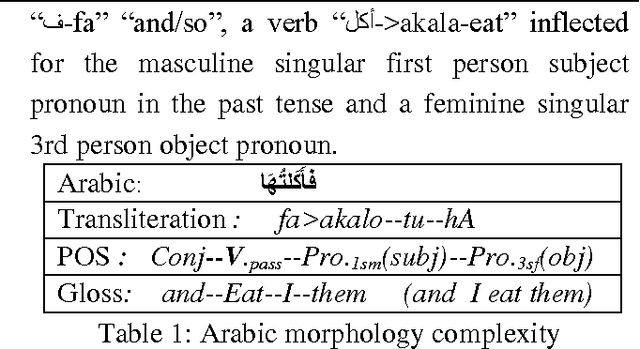
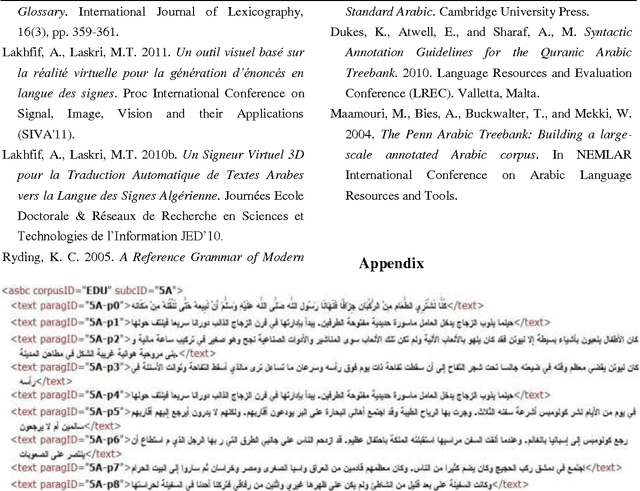
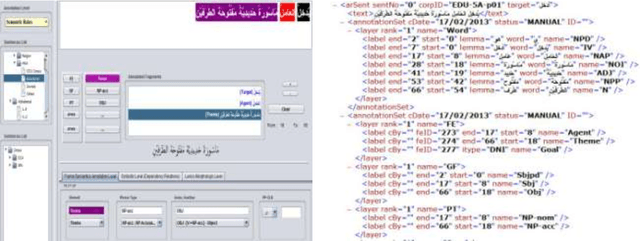
Abstract:In this paper, we present an ongoing effort in lexical semantic analysis and annotation of Modern Standard Arabic (MSA) text, a semi automatic annotation tool concerned with the morphologic, syntactic, and semantic levels of description.
 Add to Chrome
Add to Chrome Add to Firefox
Add to Firefox Add to Edge
Add to Edge